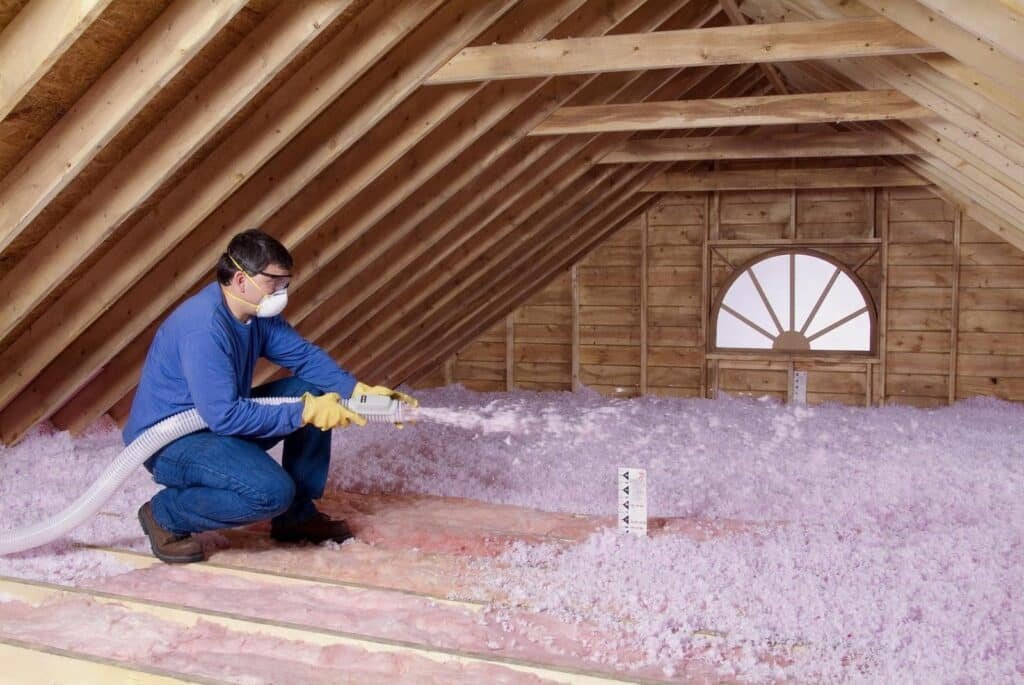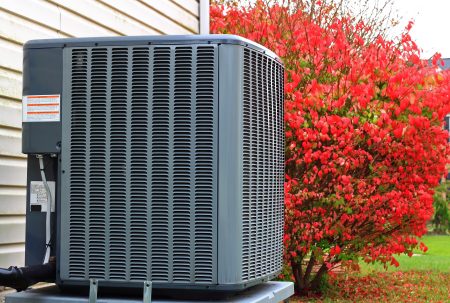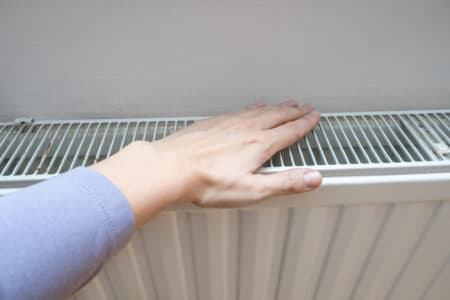So, there is too much heat loss through your attic or roof? Well, it’s time to call a contractor for attic insulation!
To know more about attic insulation, read till the end.
What is Attic Insulation?
Attic insulation is the process that prevents heat loss or avoids cold air that peeps in through the roof or attic of your house. It is more prevalent in areas with an extreme climate, weather too hot or too cold.
Due to intensively hot or cold temperatures, such places require attic insulation to regulate heat flow inside the house. Therefore, attic insulation is a must-have for such homeowners.
Attic insulation allows you to control the temperature inside your house, as it involves the insulation of low-conductivity materials. These materials are installed in the parts of the roof and attic.
Types of Attic Insulation
Loose-fill and blown-in insulation
If you are looking for the safest and easiest way to insulate your attic, this is for you. Many people find it convenient as it does not affect the finishes or exteriors around the house.
Moreover, the materials being used in the loose-fill and blown-in insulation can be recycled. Mainly fiberglass, cellulose, and wool are employed for insulation. For this reason, it is considered a convenient method.
The mineral wool is recycled after being produced as waste by the industries. The cellulose comes from recycled newsprint, and most of the fiberglass is also used efficiently.
Tiny particles of these materials are then injected into the surface. Therefore, buildings that do not have insulation take the facility of this type of insulation.
Spray Foam Insulation
If you have unfinished walls and buildings, then spray foam insulation is a perfect choice. When a building is under construction, the majority of the people prefer this type of insulation.
The spray foam insulation is helpful because it can fill even the smallest spaces inside the wall. It can be sprayed and blown into walls, counters, attic tops, and even underground.
This type of attic insulation comes with an added advantage, as it prevents air from infiltrating into surfaces, which other types of insulation cannot stop. Two types of foam, open-cell foam and closed-cell foam are used in this type of attic insulation.
Both of them have their qualities. The materials used in this type of insulation are polyurethane and cementitious.
Blanket Insulation
This is the most popular and widely used insulation. As the name suggests, sheets or blankets are made of mineral wool, fiberglass, and plastic fibers.
The sheets or blankets are available in the market in various sizes and dimensions. These can be hand-cut so that they can easily fit into empty spaces.
Concrete Block Insulation
When the houses and buildings are made with concrete blocks, there is an option to insulate them there and then. However, you get an extra benefit when this insulation is done on the exterior or interior.
When the exterior is insulated, the heat is not lost due to the blocks being tightly together. Some concrete blocks have polystyrene beads injected in them so that the foam is rigid.
Insulation can be done at the time of construction or renovation. If the house is already constructed, it can be insulated internally.
Which type of Attic Insulation is best?
The best attic insulation is the one that suits your budget and fulfills your requirements. However, several factors determine the type of attic insulation one should use.
R-value
R-value refers to the unit by which the effectiveness of insulation is determined. The material’s capability of preventing and transferring heat loss is shown by how substantial the R-value is.
The R-value depends on the density and thickness of the material. It also varies with the type of material used in the insulation and where and how the house is insulated.
Materials
The material which has the highest R-value does not necessarily mean that it will be the best for your house. The materials used must be inspected, and their pros and cons must be checked well.
For example, the most commonly used material is fiberglass. It is cheap, fire-resistant, and moisture resistant. But it may not be the best material for your house as you may not be living in a humid environment.
However, mineral wool is more expensive than fiberglass. It might drill holes in your pocket.
Recycled material is used in its insulation, so this material is also considered organic. It has the same characteristics as fiberglass. Therefore, you have to choose the material that meets all your requirements.
How to increase attic insulation efficiency?
The attic insulation in your home or building must be both; effective as well as efficient. The costs that you have incurred to insulate your home should be worth it as well. Therefore, it is essential that when the insulation takes place, it is efficient as well.
For efficient attic insulation in your house, you must insulate your home with a high R-value. If your house is already constructed, R38 to R49 insulation is enough. If the house is being built, you need insulation of R49 to R60.
Another simple way of increasing attic insulation is checking your house like a responsible house owner. It would help if you looked around under the staircase for any open joists. If you see beams, this means that the attic is not insulated correctly.
You need to have such an insulated attic that saves your energy bills all around the year. In the winters, the insulation prevents heat loss through your home, and in summers, it remains cool indoors with less heat coming in. Only then, the coat of the attic insulation will be worth it.
Cost of attic insulation
Just like choosing which attic insulation is best for you, the different insulation types will have additional costs. This is because different methods employ other materials.
Some insulation takes a long time, or they are more challenging; therefore, the labor costs would get higher. If you are replacing the old insulation with a new one, it will cost you less. Thus, the prices depend on the situation.
It is estimated that you may have to pay $1.5 to $3.5 per square foot for insulation for the material costs. The exact figure will depend on which material you will use to insulate your attic and its durability and R-value.
The labor costs are estimated at $70 per hour. The cost of the insulation also depends on how big of an area you want to get insulated. Most of the time, the electrician fees also have to be paid because the insulation has to be done around wires and cables.
According to a reliable estimate, it may cost $1700-$2100 for sufficient attic insulation for an average household.
How much insulation does one need?
Many people are inexperienced when it comes to attic insulation. They have no idea of the type of insulation that should suit their homes. However, if you want to know how much insulation you need, you must know these things.
Firstly, you must have knowledge of which zone you are in. There are specific R-values for each location. Therefore, you would need insulation of that R-value that is specified for your area. The second thing you have to do is the method of insulation you want in your attic or roof.
You could also measure the room or the corridor in your house where the insulation is needed. All you have to do is measure the length and the height of the wall and multiply each other.
When you have the room’s measurements or the house, you need to buy the materials according to those dimensions. Every manufacturer has its own sizes, so you have to check how many bundles of rolls and blankets you would need to insulate your home.
Common attic insulation mistakes
A lot of common mistakes come across while attic or roof insulation is taking place.
First of all, there may be gaps in the current insulations. These gaps must be filled, or else the purpose of these insulations would not be complete. The attic floor must be in contact with the insulation to prevent any mistakes.
Another common mistake which is found quite often is that the attic floor is not sealed. Before insulation, the attic must be neither cracked nor has holes. Otherwise, the air will infiltrate and render the insulation worthless.
Therefore, all cracks and holes should be chalked before insulations. Some of the open spaces include spaces in chimneys, openings for pipes, and opened soffits.
When the house is insulated by loose-fill insulation due to poor ventilation, the insulation moves out of place. Make sure that the attic is ventilated well and the vents stay out of obstructions.
How long does insulation last?
Different types of insulation methods have other lifetimes.
For example, spray foam insulation is said to be the most durable insulation. It is believed that once you get it done, you will not have to replace the spray foam insulation. However, if exposed to extreme weather conditions, you might have to get it done again.
Another example is fiberglass insulation. It is said that it lasts for 80 to 100 years if it is not worn out. However, the fiberglass starts to get damaged after 10 to 15 years, so it must be checked.
Cellulose insulation is made up of eco-friendly and recycled materials. Therefore, its lifespan is 20 to 30 years, and it gets damaged after 15 years approximately.
With all the information provided in this article, you can pick the type of insulation your house requires. Make sure it stays within your budget and fulfills all your requirements.




